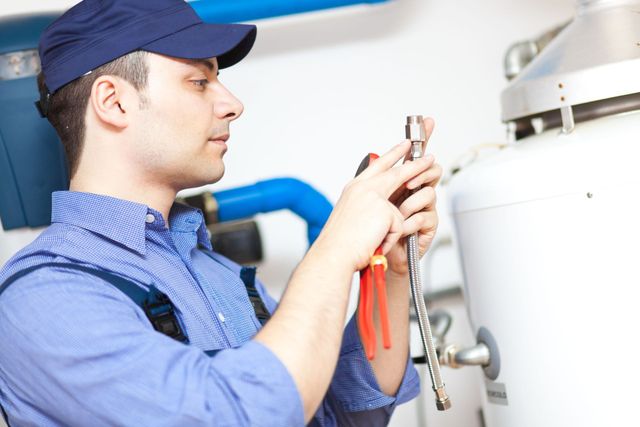What're your opinions on Tips on Maintaining a Water Heater?

Hot water is important for daily comfort, whether it's for a refreshing shower or cleaning recipes. To guarantee your warm water system runs effectively and lasts longer, routine upkeep is crucial. This post supplies functional tips and insights on how to maintain your home's warm water system to stay clear of interruptions and expensive repair work.
Introduction
Keeping your home's warm water system may seem challenging, yet with a couple of easy steps, you can guarantee it runs smoothly for years ahead. This overview covers whatever from understanding your hot water system to do it yourself maintenance tips and recognizing when to call expert help.
Importance of Keeping Your Warm Water System
Regular upkeep not just extends the life-span of your warm water system but additionally guarantees it operates successfully. Ignoring upkeep can cause decreased performance, greater energy costs, and even early failure of the system.
Indicators Your Hot Water System Needs Upkeep
Knowing when your warm water system needs focus can stop major concerns. Watch out for signs such as irregular water temperature, strange noises from the heating system, or rusty water.
Purging the Water Heater
Purging your water heater gets rid of sediment build-up, enhancing performance and lengthening its life.
Checking and Changing Anode Rods
Anode rods protect against rust inside the container. Examining and changing them when worn is crucial.
Complicated Concerns Needing Specialist Assistance
Instances include significant leakages, electrical troubles, or if your water heater is constantly underperforming.
Routine Expert Upkeep Advantages
Specialist maintenance can include detailed evaluations, tune-ups, and making sure compliance with safety requirements.
Checking and Adjusting Temperature Setups
Adjusting the temperature setups makes certain optimum performance and security.
Do It Yourself Tips for Maintenance
You can carry out numerous upkeep tasks yourself to maintain your warm water system in top condition.
Looking for Leakages
Regularly examine pipelines and links for leaks, as these can result in water damage and greater costs.
Understanding Your Hot Water System
Before diving right into upkeep jobs, it's helpful to comprehend the fundamental components of your hot water system. Normally, this consists of the hot water heater itself, pipes, anode rods, and temperature controls.
Monthly Maintenance Tasks
Routine regular monthly checks can aid capture small issues before they intensify.
Checking Stress Relief Valves
Checking the stress relief valve ensures it works appropriately and prevents excessive stress build-up.
Shielding Pipes
Protecting warm water pipelines lowers heat loss and can save energy.
When to Call a Specialist
While do it yourself maintenance is advantageous, some issues need expert experience.
Conclusion
Regular maintenance of your home's hot water system is necessary for effectiveness, durability, and expense financial savings. By adhering to these pointers and knowing when to seek professional assistance, you can guarantee a trustworthy supply of warm water without unanticipated disturbances.
How to Maintain an Instant Hot Water Heater
Before tinkering with your hot water heater, make sure that it’s not powered on. You also have to turn off the main circuit breaker and shut off the main gas line to prevent accidents. Also turn off the water valves connected to your unit to prevent water from flowing into and out of the appliance. 2. When you’re done, you have to detach the purge valves’ caps. These look like the letter “T” and are situated on either side of the water valves. Doing so will release any pressure that has accumulated inside the valves while at the same time avoid hot water from shooting out and burning your skin. 3. When the purge valves’ caps are removed, you have to connect your hosing lines to the valves. Your unit should have come with three hoses but if it didn’t, you can purchase these things from any hardware or home repair shops. You can also get them from retail stores that sell water heating systems. Read the user’s manual and follow it to complete this task properly. When the hosing lines are connected, open the purge port’s valves. 4. You should never use harsh chemical cleaners or solutions when cleaning your unit. Make use of white vinegar instead. It should be undiluted and you’ll probably use about 2 gallons. 5. Now flush your water heater. This task should probably take about 40 minutes. We can’t give you specific directions for this because the procedure is carried out depending on the type, model and brand of your heater. With that being said, refer to the user’s manual. 6. When you’re done draining the unit, you have to turn off the purge port valves again. Remove the hosing lines that you earlier installed on each of the water valves. Put the valve caps (purge port) back in their respective places and be very careful so as not to damage the rubber discs that are found inside these caps. 7. Now that everything’s back in place, check your user’s manual again to find out how to reactivate your water heating system. 8. Once it is working, turn one of your hot water faucets on just to let air pass through the heater’s water supply pipes. Leave the tap on until water flows smoothly out of it. https://www.orrplumbing.com/blog/2014/september/how-to-maintain-an-instant-hot-water-heater/

I'm certainly very interested by How to Maintain Your Water Heater & Prolong its Life and I am praying you appreciated the entire post. Are you aware of someone else who is interested by the subject? Feel free to promote it. Thanks for going through it.
Click Here